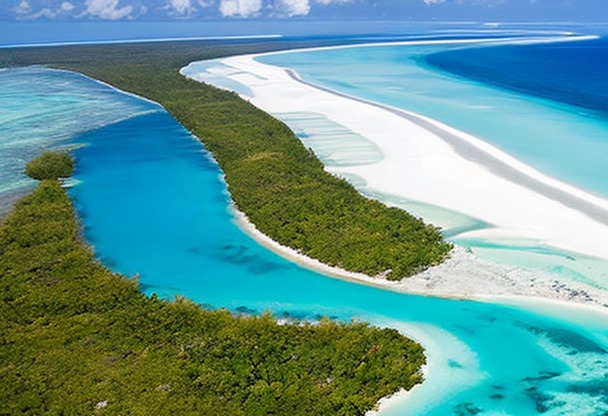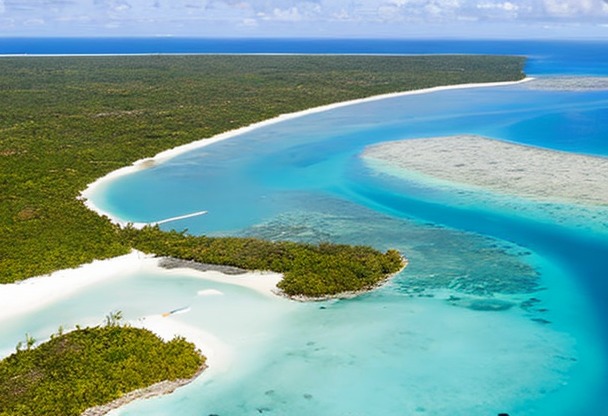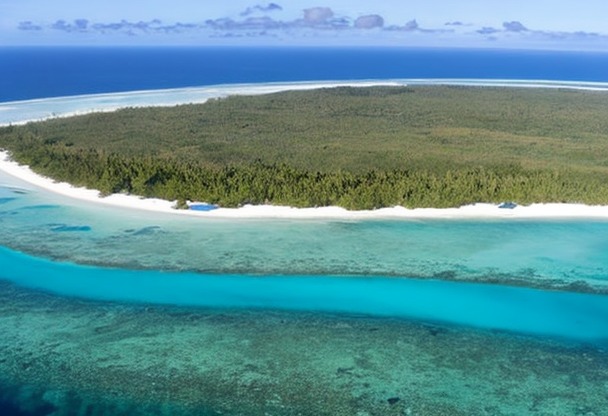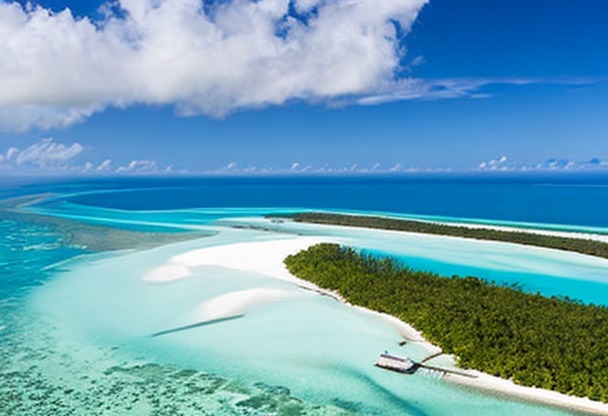WHEN TO TRAVEL TO Kiribati
Choosing the right time for your trip to Kiribati can make all the difference. It's important to consider weather elements, seasonal events and busy tourist periods to maximize your travel experience.

Location
Climate
When to go to Kiribati: high and low season
As mentioned above, the climate in Kiribati is tropical, characterized by two main seasons: the dry season and the wet season. In general, the best time to visit Kiribati is between April and October, during the dry season. However, there are variations from region to region and island to island.Dry season: April to October
The dry season is generally considered the best time to visit Kiribati, as the weather is milder and rainfall less abundant. During this period, temperatures vary between 25 and 33°C, with an average around 28°C. April, May, June and July are particularly pleasant, with sunny weather and moderate rainfall.Wet season: November to March
The wet season is characterized by frequent, heavy rainfall and high humidity. Temperatures are generally warmer during this period, with averages between 30 and 35°C. It should be noted that January and February are the rainiest months of the year, so it's advisable to avoid traveling to Kiribati during these months if you want to enjoy a sunny holiday.Major cultural events in Kiribati
Kiribati has a rich traditional culture, and several annual events enable visitors to discover and appreciate this unique culture. Here are some of the main cultural events that take place every year in Kiribati:- New Year's Eve - Celebrated on January 1, New Year's Day is an important public holiday in Kiribati. Festivities usually include traditional dances, concerts, fireworks and family meals.
- National Youth Day - Held on the last Friday in March, this day celebrates youth and their achievements. Sports activities, competitions and workshops are organized to involve young people in community life.
- Independence Day - Celebrated on July 12, this day commemorates Kiribati's independence, achieved in 1979. Festivities include parades, traditional dances and sports competitions.
- Labour Day - The first Monday in October is dedicated to the celebration of work and workers in Kiribati. This day is marked by family activities and community events.
Public holidays in Kiribati
In addition to the cultural events mentioned above, Kiribati also has a number of official public holidays. Here is a list of the main public holidays in Kiribati:- New Year's Day (January 1)
- Good Friday (date variable)
- Easter Monday (date variable)
- National Youth Day (last Friday in March)
- Mother's Day (second Sunday in May)
- Ascension (date variable)
- Independence Day (July 12)
- Labour Day (first Monday in October)
- Human Rights Day (December 10)
- Christmas (December 25)
- Boxing Day (December 26)
Insurance

Your credit card does not cover you in all situations, that is whyIt is essential to take out insurance before you leave to avoid any unpleasant surprises. If you need to see a doctor or be hospitalized, in some countries, medical costs are very high and you will then find yourself having to pay several thousand euros.
Our partner Chapka Insurance proposes the contract CAP ASSISTANCE 24/24 with many essential guarantees.


Flights

Your flight has been cancelled or delayed ?
You may be eligible for a compensation of up to €600 ! For this, lawyers are responsible for handling your claim with the airline and are only paid when the reimbursement is effective.
In conclusion, no financial risk for you, only advantages!
General statistics on immigration to Kiribati
Immigration data is essential for understanding a country's demographic and economic trends. In recent years, Kiribati has experienced moderate population growth, from around 100,000 in 2000 to almost 120,000 in 2020. However, the net immigration rate has remained relatively stable, with an average net migration of around -2 % per year.Immigrant origin
Most of the immigrants arriving in Kiribati come from neighbouring countries in the Pacific, such as the United States and Japan. FijiMarshall Islands and Nauru. However, there are also immigrants from other parts of the world, notably Asia, Europe and North America.Most popular visas in Kiribati
There are several types of visa available for those wishing to visit Kiribati, whether for business, tourism or family reasons. The most popular visas are :- Visitor visa For people wishing to travel to Kiribati on vacation, visit friends or attend conferences and seminars.
- Business Visa Kiribati: issued to professionals wishing to conduct business activities in Kiribati, such as negotiating contracts, investing or attending business meetings.
- Work visa for foreigners employed in the country, including temporary workers and intra-company transfers.
- Student visa awarded to international students enrolled in a higher education institution in Kiribati.
- Permanent residence visa granted to those who have established strong links with the country and wish to settle there permanently.
Visa requirements and procedures
To obtain a visa for Kiribati, it is generally necessary to complete an application form, pay an application fee and provide certain supporting documents, such as medical certificates, proof of accommodation and subsistence funds. In some cases, it may also be necessary to present a letter of invitation or an employment contract.Kiribati international tourism figures
Tourism is one of Kiribati's main economic drivers, contributing around 20 % of the country's gross domestic product (GDP). According to Ministry of Tourism and TransportThe total number of international tourists entering the country has risen in recent years:- In 2015, Kiribati welcomed around 6,000 foreign visitors, the majority of whom came from countries such as Australia, the United States and Japan. New Zealand and UNITED STATES.
- In 2018, this figure rose to almost 7,500 tourists, representing growth of 25 % in just three years. This increase can be explained in part by the improvement in tourism infrastructure and the increase in the number of air links with the main international destinations.
Main tourist attractions
Kiribati's natural and cultural attractions are varied and attract many visitors every year. Among the most popular sites are :- The nature reserve of Phoenix Islands Protected Area (PIPA), home to some of the world's most pristine waters and richest coral reefs.
- The Line Islands, where you can observe exceptional marine life, including turtles, sharks and manta rays.
- The cultural village of Ambo, which offers a glimpse of traditional Kiribati lifestyle and activities such as dancing, mat-braiding and preparation of local dishes.
Impact of immigration on the local population
The influx of tourists and immigrants to Kiribati in recent years has had a number of effects on the local population. On the one hand, it has stimulated the economy by creating jobs and generating income for local businesses. On the other, it has also led to increased demand for public services and infrastructure, such as drinking water, electricity and housing.Efforts to manage the impact of immigration
To minimize the negative impact of immigration on society and the environment, the Kiribati government has introduced several measures, including:- The adoption of a national plan for sustainable development, which aims to promote balanced economic growth while preserving natural resources and the quality of life of local residents.
- The implementation of a stricter legal framework to regulate the entry and residence of foreigners, to prevent illegal immigration and potential abuse of the visa system.
- Awareness-raising campaigns for visitors to encourage responsible, environmentally-friendly behavior, in particular by avoiding over-consumption of water, food waste and the disruption of fragile ecosystems.


